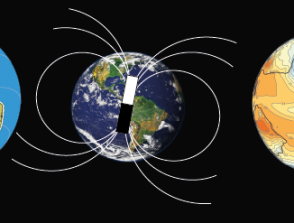Rapid or extreme geomagnetic field intensity variations? The case of the 6th millennium BC in the Near East and its geomagnetic and archeological implications
Début : 01 octobre 2015
Fin : 07 décembre 2018
Encadrants :
Yves Gallet, Volodia Pavlov
Équipes liées :
Paléomagnétisme
Statut : Soutenue
Doctoral dissertation – Stanislava Akimova
Rapid or extreme geomagnetic field variations are attracting much attention within the archeomagnetism and geomagnetism communities because they should provide new insight of flow dynamics within the Earth’s outer core. High-resolution archeomagnetic records acquired from the analyses of baked clay artifacts (e.g., pottery, bricks, kilns) make possible the detection and the characterization of short-lasting geomagnetic events such as archeomagnetic jerks and geomagnetic spikes.
In this context, the Near East is one of the most promising regions for archeomagnetic purposes because the richness of its archeology and its history facilitates the acquisition of numerous well-dated archeomagnetic data, in particular from one of the most ancient pottery production known in the world. The present work is focused on the geomagnetic field intensity variations in the Near East during the 7th and 6th millennia BC, a time interval at present poorly documented. After a synthesis of the intensity and directional data currently available worldwide for this time interval, we report new archeointensity data from the Near East dated from the end of the 7th millennium BC to the end of the 6th millennium BC. These data were obtained from pottery fragments collected from two Upper Mesopotamian multilayered settlements Yarim Tepe I (YT-I) and Yarim Tepe II (YT-II) located in Northern Iraq. All archeointensity measurements were carried out using the experimental procedure developed for Triaxe magnetometers. A set of strict selection criteria was considered to ensure a high reliability of our results. Along the stratigraphy of both archeological sequences, several groups of potsherds were collected. From YT-I, 9 of the 16 groups and from YT-II, 23 of the 30 groups yielded reliable group-mean intensity determinations. In order to report the results as a function of age, we constructed an age model for the two archeological sites relying on new radiocarbon dates and on available archeological data. The new results from YT-II show the occurrence of a short-lasting geomagnetic field intensity peak at ~5500 BC, the duration of which may be as short as only a few decades. Previous published data from Northern Syria and Bulgaria describe a similar and synchronous event. The new data from YT-I constrain the short duration of a second intensity peak at ~5750 BC observed only from Bulgarian dataset to a maximum of one century. The variation rates associated with these two peaks characterizing secular variation in Eastern Europe and the Near East during the 6th millennium BC amount to ~0.12-0.25 µT/year. These values are thus slightly higher than the maximum intensity variation rates known for the recent field. However, while the duration of the two peaks appears similar to that characterizing geomagnetic spikes, the related intensity variation rates are much smaller than those inferred for the spikes (>0.5-1.0 µT/year). Our new archeointensity data have also interesting implications in archeology. They lead to propose a new synchronization of archeological chronologies for the 6th millennium BC that were independently established across Upper Mesopotamia.




